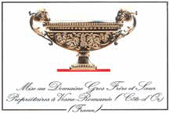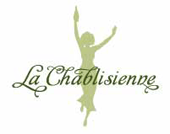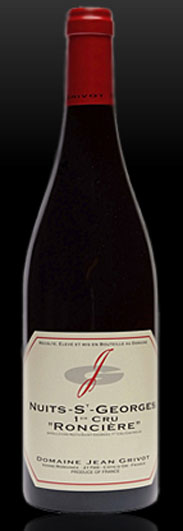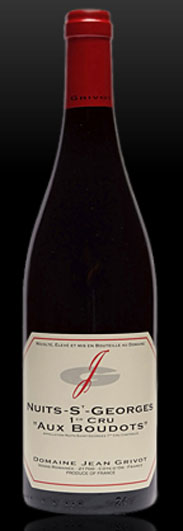burgundy
The Ancient & Classic Winemaking Terroir
In Burgundy the land is foremost when considering the wine. Unlike the wines of Bordeaux, where they are ranked by producer, wines in Burgundy are first listed by the location of the vineyard, secondly the vintage and finally the producer, which often only has a humble mention.
Read More
The wines produced in Burgundy gain much recognition and the modern viticulture predominantly revolves around two grape varietals. The red wines, which are commonly referred to as “Burgundies”, are made from the grape Pinot Noir and form some of the most prestigious wines. Chablis, a formal subregion of Burgundy, is renown for mainly producing white wines made from the Chardonnay grape but are usually referred to by its own sub-regional name as opposed to being called a “Burgundy wine”.
The various AOCs are meticulously classified and strictly defined. Grand Cru is placed at the top, which denominates the small amount of the best parcels for vineyards in the Côte d’Or. These wines are generally produced in a style for cellaring and typically should be aged for a minimum of 5-7 years, with the best examples being kept for more than 15 years. Due to the prestige of the parcels the Grand Crus will only list the name of the vineyard as the appellation.
The next level are the Premier Crus, usually shortened to “1er Cru”, and are produced from parcels that are still recognized to be of high quality but not as well regarded as Grand Cru sites. Generally, these wines should be aged 3-5 years and similarly to Grand Crus can also be cellared for much longer.
Premier Cru wines are labelled with the village of origin, the Cru classification and in most cases, the vineyard name.
The final note is on the importance of vintages for Burgundies. As the region experiences a wide excursion of temperatures due to the continental climate, which is characterized by very cold winters and hot summers, the weather is very unpredictable with the possibility of rain, hail and frost through the harvest season. As such, the quality of the wines can vary between vintages depending on the drastic effects of the weather.
![]()
Bruno Colin, son of Michel Colin, is the forth generation of his family to grow grapes in Burgandy within the prestigious Côte de Beaune. He and his brother, Philippe, split the holdings of their father in 2003 following his retirement and chose to bottle under seperate labels.
Bruno, with the help of his with Stéphanie, farms eight hectares of land spread over thirty different parcels scattereted across five communes usually collecting only a few rows per parcel. Farming under these circumstances is quintessentially Burgundian, where old Napoleonic codes of inheritance dictate that property is to be divided equally among offspring As such, he vinifies nineteen cuvées separately, twelve of which are premier cru, vinifying his wines in the old family winery located in the center of the Chassagne-Montrachet village. Using traditional vinification methods and aging his wines anywhere from twelve to eighteen months in barrique: Bruno’s style shows
beautiful balance, both aromatically and texturally, while showcasing the delicate minerality and nuanced complexity of each vineyard.
There are no products in this group.

The Gros dynasty began in 1830 when Alphonse Gros married Madame Latour, settling in Vosne-Romanée in what is now the home of Jean Gros. It was he who encouraged mechanisation and new viticultural techniques, such as high vine training, long before they became standard practice. When Jean retired in 1995, the estate was divided amongst his three children: Michel, Bernard and Anne.
It is Bernard Gros who now manages Domaine Gros Frère et Soeur, leading this impressive estate in Vosne Romanée which includes several Grands Crus. In recent years, when he has not been indulging his other passion, playing the piano, Bernard has overseen a great deal of investment in his properties, including a dramatic enlargement of the cellars and continued up-grading of the vineyards. Quality at this estate begins with the fact that the domaine owns top quality parcels in each appellation. Clos Vougeot-
Musigni, for example, is at the top of Clos Vougeot, bordering Musigny.
There is a distinct and consistent house style at this estate. The wines have deep, dark colors and wonderfully expressive aromatics. The fruit flavors are very pure and concentrated, and the wines are consummately supple, smooth and seamless. Oak barrels are used to enhance the richness and fine texture of the wine, but the oak character is well integrated and does not obtrude.
There are no products in this group.

The Grivot family’s deep roots in Burgundy wines can be traced back to the mid-seventeenth century.
Originating in Jura, the Grivot family moved to Arcenant in the Hautes-Côtes, and began growing their first vines. At the turn of the eighteenth century, just before the French Revolution, Joseph Grivot sold his vineyards in the Hautes-Côtes and settled in Vosne-Romanée, paving the way for his descendants and his son, Gaston, to develop the domaine. In 1919 Gaston sold various vines in the lesser areas to purchase a large parcel of the grand cru “Clos de Vougeot”, building a gate for the domaine that can still
be seen today. With this Gaston and his son Jean, being amongst the first few oenologists to graduate from Dijon University in the early 1920s, worked together to establish the Grivot name in wine world. Like his father, Jean acquired another parcel of grand cru land in Richebourg in 1984 and was succeeded by his son, Etienne in 1987.
Etienne Grivot, the current head of Domaine Grivot, studied viti- and viniculture in Beaune, working around the globe, from in California to elsewhere in France, allowing him to bring a variety of experience and knowledge to the domaine’s wines. He understood that it was important to return to the basics and restore the soil’s natural balance, reverting to the traditional methods of vinification and harvesting:
His aim was simple, to do everything possible to make pleasurable, rich and fine wines that reflect Burgundy’s unique terroir and that are also suitable for long-term ageing.

Formed in 1923 at Chablis in Burgundy, the meticulous care of the vine-growers working together under the banner of La Chablisienne have given birth to wines whose magnificence are amplified over the passage of time. These wines, coming from a mosaic of “cimats”, or vineyard plots, provide a pallet of emotions marked with a truly mineral touch.
This winery is a formation of nearly 300 winegrowers with the aim to produce great white wines from Chablis. These wines reflect the utmost care shown by the winegrowers and their devotion and commitment to the cultivation of their vineyards is revealed through the heart and soul of their wines.
It is through this subtle harmony between the grower in the vineyards, the technical advisor and the winemaker which bestows the wines of La Chablisienne with their much sought-after distinction.
There are no products in this group.



